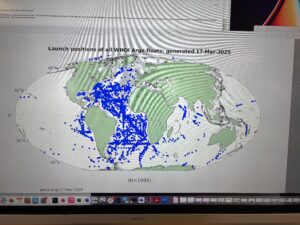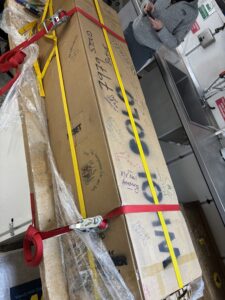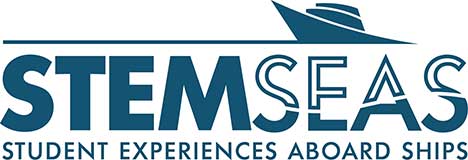After a delicious lunch, which I feel like I would be doing my trip a disservice by not mentioning how incredible the food is onboard, we met with the chief engineer who showed talked to us about being an engineer aboard a vessel and also showed us the engine room. Once again, this was something I knew nothing about, so I feel like I learned an absolute ton in just a short 45 minute meeting. The engine room tour was especially enlightening, as hands on learning tends to be, because it really, at least on a very surface level, made me feel like I can understand how the ship runs.
 Engine Room
Engine Room
After cheese thirty (yes, there is a dedicated time on the boat where we all get to eat cheese! I will definitely come home well fed), Dwight Ebanks from Savannah State University did a demonstration about how temperature and salinity impact water density and therefore mixing, further solidifying the points made in Joe’s previous lecture.
I have saved the best for last, not because of suspense building, but because it actually happened late in the day- we also got to help deploy the 1,999 Argo float from WHOI while on board. This float will join a fleet of over 3,500 other floats worldwide that are collecting a wide variety of data in the ocean. Before launch, we decorated the cardboard box, which is completely biodegradable and will be dissolved within 30 minutes. The launch itself was amazing but also slightly anticlimactic. It was pretty much just tossed overboard. However, knowing that this information would be helping many students and scientists for literally years to come really added to the excitement. The gorgeous sunset also helped build hype.
 Current Argo Float Array
Current Argo Float Array
 Our decorated Argo Float
Our decorated Argo Float
While the day was incredibly busy (so busy I needed 2 posts to tell you all about it!), I don’t want to give you the impression that we had no down time. We certainly had breaks, and my personal favorite thing to do during breaks was to go up to the bow of the ship and watch us go through waves. While there, I also saw dolphins, many sargassum mats, and even flying fish. The bow quickly became my favorite place, and I’m hoping we get to see even more incredible organisms as we continue our transit.
 Waves breaking over the bow of the R/V Neil Armstrong
Waves breaking over the bow of the R/V Neil Armstrong
I am still basking in today and honestly the whole trip, and I am just so excited to see what tomorrow will bring. If you ever have an opportunity to go on a STEMSEAS cruise, I would say do everything in your power to make it happen.
-Becky MacKay, assistant professor of Biology at Fort Valley State University

